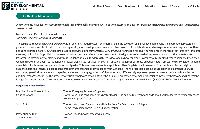Here's that final, edited version:
Presentation Title: A new genome visualization resource for exploring and visually analyzing RNA-Seq gene expression data for tardigrades (Hypsibius exemplaris and Ramazzottius varieornatus)
Abstract (one paragraph, 2000 character limit, any funding sources to be included in the last sentence):
The tardigrade species Hypsibius exemplaris is an emerging model system for understanding the evolution of animal development. Its transparent embryos, rapid generation time, ease of cultivation in laboratory settings, and small genome size make this microscopic invertebrate amenable to genome-scale assays such as RNA-Seq gene expression analysis. Other tardigrade species, including Ramazzottius varieornatus, offer models for studying resilience in the face of extreme environmental stresses, such as ionizing radiation. However, advanced genomics visualization resources for tardigrade species are lacking in comparison to other invertebrates important in developmental biology and stress resilience studies. To address this, we developed a new genome browser resource for tardigrades using the Integrated Genome Browser, an open-source genome browser well-suited for visual analysis of functional genomics data sets, especially data from scaffold (incomplete) genome assemblies like those currently available for tardigrades. This new resource contains published RNA-Seq datasets downloaded from public archives as original sequence data and then re-aligned to tardigrade genome assemblies downloaded from Genbank. The re-processed data includes sequence alignments, useful for comparing genetic differences across species, and scaled coverage graphs, useful for observing differentially expressed genes between experimental samples. In addition, researchers can use the browser to visualize their own data alongside the public, re-processed data, making it easier to interpret their work and understand its significance and impact. The Integrated Genome Browser is freely-available from bioviz.org. An award from NIH NIGMS (R35GM139609) provided funding.
Task
Major
IGBF-3742 Prepare for 2024 SDB poster and booth presentations

SDB Conference - Abstract Submission Guidelines:
It costs $195 to become a full member with SDB, so we could pay $750 for one non-member to go and present a poster, or we can pay $790 for a membership+attendance and try to apply for a talk, though we don't slot well into any of the categories for the talks. Ann Loraine, which (if any) of these might we be a good fit for?
Update from scrum 4/5/24: Dr. Loraine would like us to present a poster rather than a talk. We should apply for Poster option #7 (Emerging model organisms) and present on tardigrades.